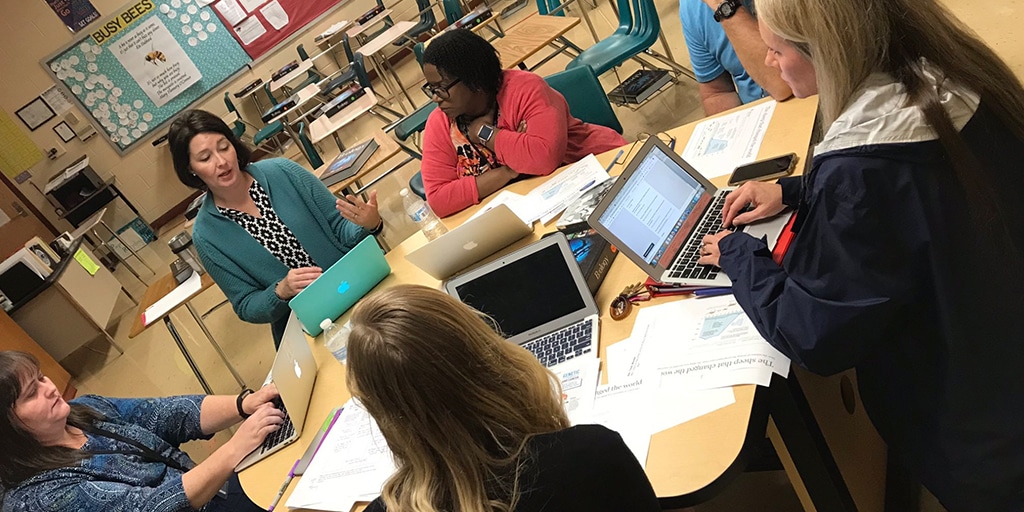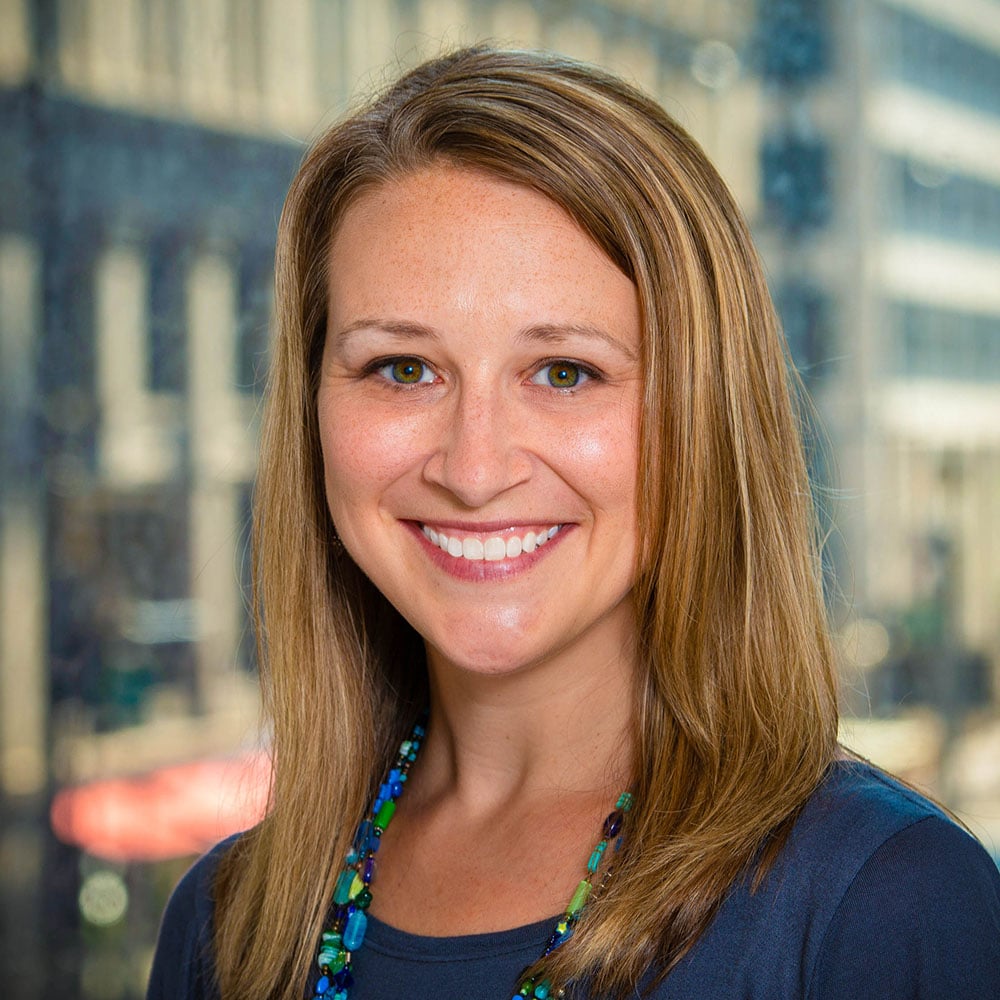
Educators at White Knoll High School in Lexington, South Carolina, have taken ownership of their professional development, personalizing their own learning as they work to provide a learner-centered experience for their students.
“If we are personalizing instruction for students and trying to teach to student interests, all of the research shows that this is just as valid for teachers,” said Rebecca Mills, an instructional coach at White Knoll.
Personalized learning means meeting each student at their own level, challenging them with high expectations for academic achievement and growing student agency.
According to Mills, White Knoll’s journey to personalized professional development started in the 15/16 school year. The school’s instructional team, then consisting of Mills, digital learning coach Tiffany Miller and former instructional resource coordinator now middle school administrator Jamie Powell, was working together on strategies to make professional development more effective while simultaneously responding to new requirements resulting from South Carolina’s Read to Succeed Act.
“We started thinking about how we could tweak weekly staff development so we had more time to talk with teachers,” said Mills. “We wanted to know if what we were offering teachers was what they needed most as they designed their lessons.”
This led to regular learning walks and opportunities for teachers to learn from each other. “When we did this, the feedback was overwhelmingly positive,” said Mills. “This was our ah-ha moment.”
Fast-forward to the 2016/2017 school year when Lexington 1 sponsored student-centered coaching training and the instructional team and approximately 25 teachers from White Knoll volunteered to participate. Through this experience, Mills and the rest of the instructional team started thinking about how to extend this learning to more of their teachers in an intentional, learner-centered way.
This meant lifting up the teachers who participated in the initial student-centered coaching training. “If teachers did all this work in the fall – the targeted coaching and literacy-based book studies – they should have a chance to highlight their learning with other teachers,” said Mills. “Also, other teachers should have the option to choose what they’re learning on their own.”
That spring, White Knoll High School launched a new personalized learning model for all of its teachers with help from the first cohort of teacher learners. The initial approach required teachers to complete four optional professional development sessions and attend one monthly mandatory whole group session.
“The expectation was that you are going to try something you learned from a colleague then come back and give feedback,” said Mills.
Today, personalized, professional development opportunities continue to grow and evolve alongside the teachers at White Knoll. Teachers are intentionally choosing what pathways they want based on what is going to suit them where they are professionally. These pathways include selecting optional small group sessions, coaching sessions including action research and/or book study groups.
Instead of hoping teachers were implementing the strategies and practices presented to them in professional development, White Knoll leaders are now asking teachers to demonstrate how they are implementing their work. This includes “Ed Camp” style workshops, during which teachers share student artifacts of work to show how their professional learning is impacting student learning, as well as instructional fairs with teachers modeling lessons to teachers as if they were students in their classes.
“You have to work to build some trust. People are putting their work out there,” said Julie Painter, assistant principal at White Knoll. “For people who have been in instructional islands, it can be intimidating. But, it’s not about judging your work. I don’t expect you to be perfect, I expect you to grow.”
“We want teachers to recognize that they are instructional leaders in the building,” Painter said. “So many of those teachers two years ago would not have been willing to step up like that. Now they see that what they are doing is valid, and they have something they can share.”
But Painter admits that she and the instructional coaching team are still learning and fighting their own instincts to lead. “It can be easy to default to becoming the presenter and driving the learning. We have to check ourselves all the time to make sure we are providing the most teacher-driven opportunity that we can provide,” Painter said.
“We’re still revising, but the biggest difference we see is that teachers are really leading their own learning,” said Painter. “They’re picking what is most powerful and needed for their students and they have the opportunity to pursue that learning.”
How is the experience of learning within personalized learning environments different from traditional education? What changes for teachers or parents? We asked people within our learning communities to find out.





